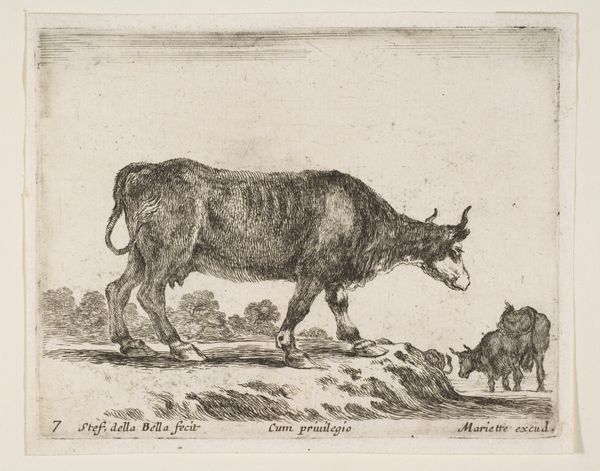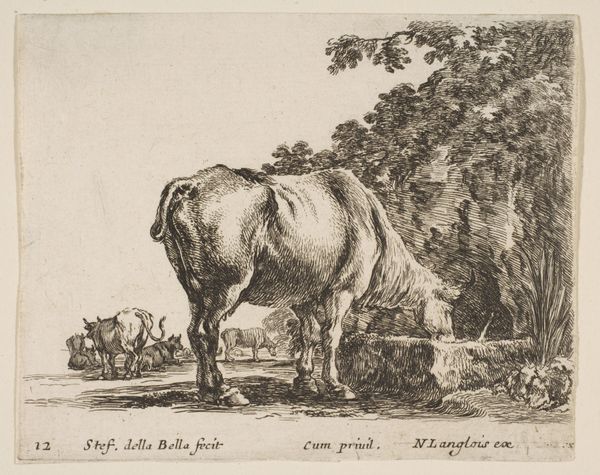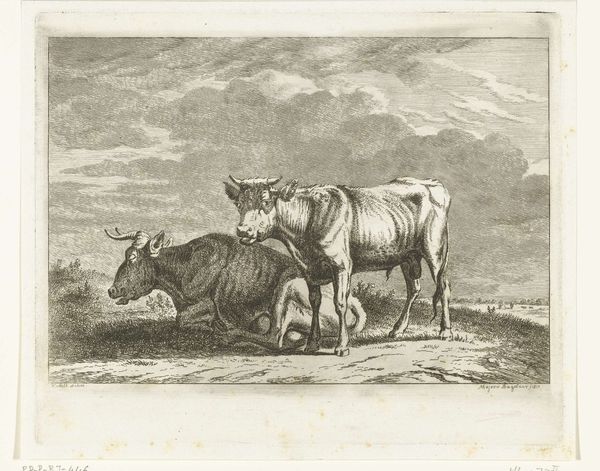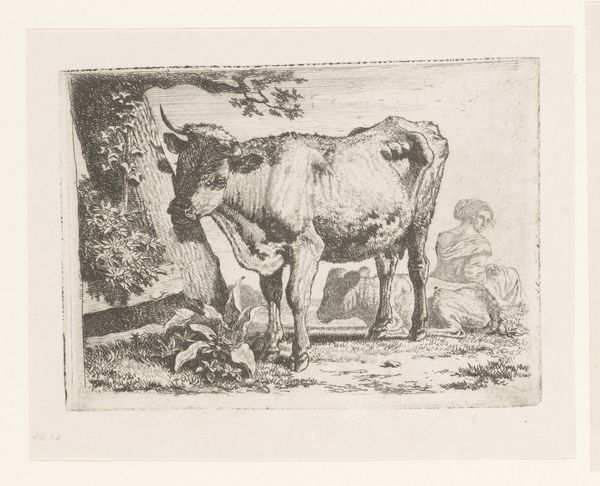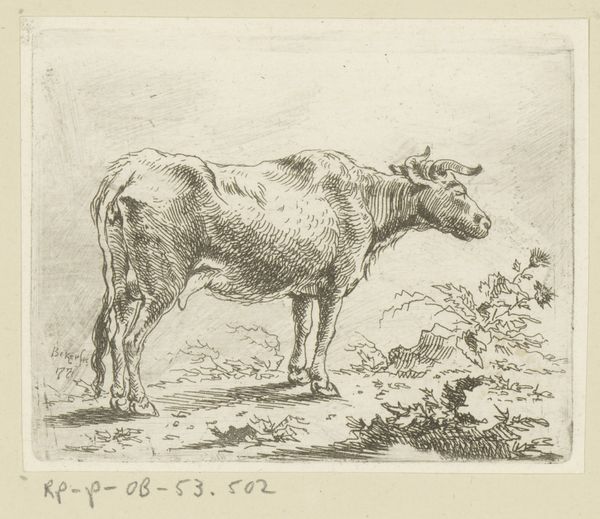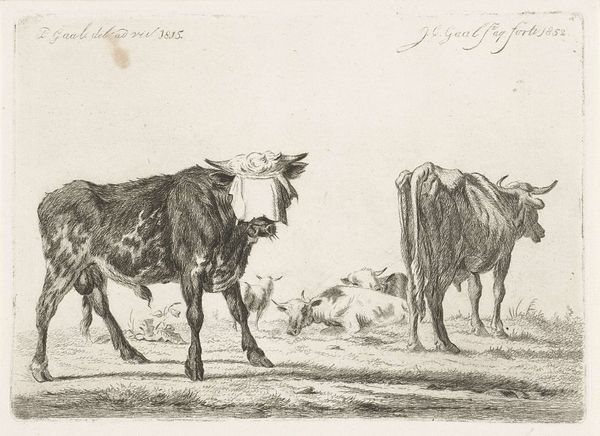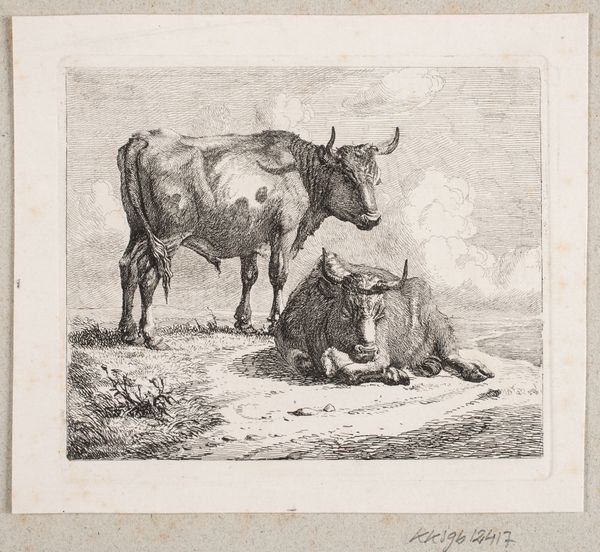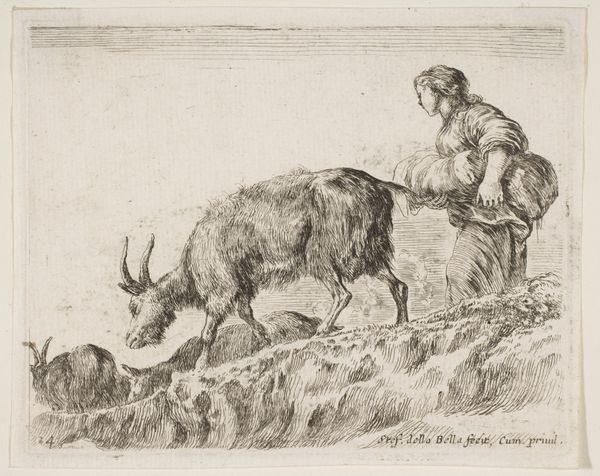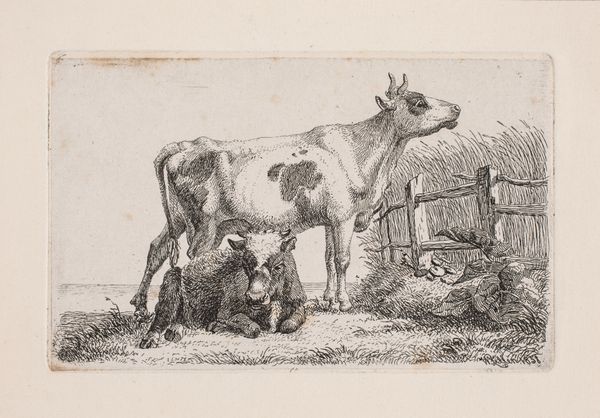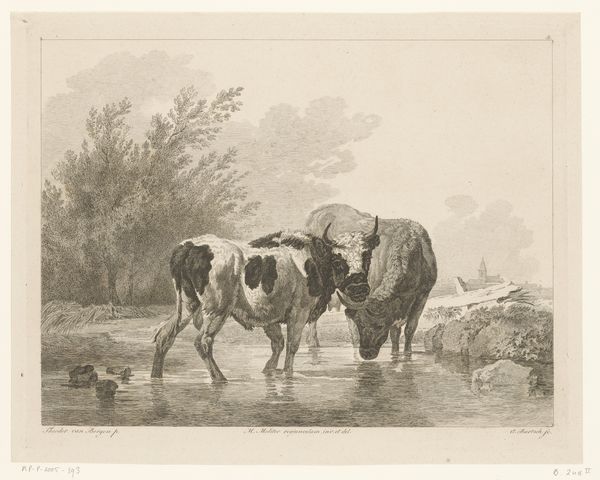
Plate 9: a cow ascending a bank, a peasant woman leading two cows across a bridge in background, from 'Diversi capricci' 1639 - 1649
0:00
0:00
drawing, print, etching
#
drawing
#
baroque
# print
#
etching
#
landscape
#
figuration
#
genre-painting
Dimensions: Sheet: 3 5/16 × 3 7/8 in. (8.4 × 9.8 cm)
Copyright: Public Domain
Editor: Right, let's talk about Stefano della Bella's etching, "Plate 9: a cow ascending a bank…" created sometime between 1639 and 1649. There's a dreamy quality to it, almost like a memory fading at the edges. The cows seem almost to float within the landscape, wouldn’t you say? What do you see in this pastoral scene? Curator: Oh, it absolutely hums with memory, doesn't it? I see Bella inviting us into a rustic daydream, the sort of scene you might stumble upon in a half-remembered fairytale. Notice how the etching, though meticulously detailed, softens around the edges like a watercolor blurring in the rain. He is offering an unsentimental look at agrarian life, yet manages to lace it with tenderness. Don’t you almost hear the distant bleating and the creak of the bridge? Editor: It's interesting you pick up on that dream-like quality; the subject matter seems quite ordinary! Does that have anything to do with the Baroque period this was made in? Curator: Perhaps indirectly, in the way that Baroque artists frequently sought the extraordinary within the ordinary, the divine nestled in the everyday. But I suspect this etching speaks more directly to Bella's own contemplative nature. He was a traveler, a wanderer – this scene feels less staged, and more snatched, doesn't it? As if he's jotted it down on the fly while following the meandering of his thoughts…or the cow itself. Editor: So it's about more than just cows. It's like... Bella's personal meditation on the journey itself, right? Curator: Precisely. We’re all just cows ascending banks in our own way, darling, aren't we? It is quite delightful when the mundane reveals the profound with just a few cleverly placed lines, isn't it? Editor: I hadn't thought of it that way. Thank you; that completely changes my perception of the piece. It feels so much more intimate now.
Comments
No comments
Be the first to comment and join the conversation on the ultimate creative platform.
